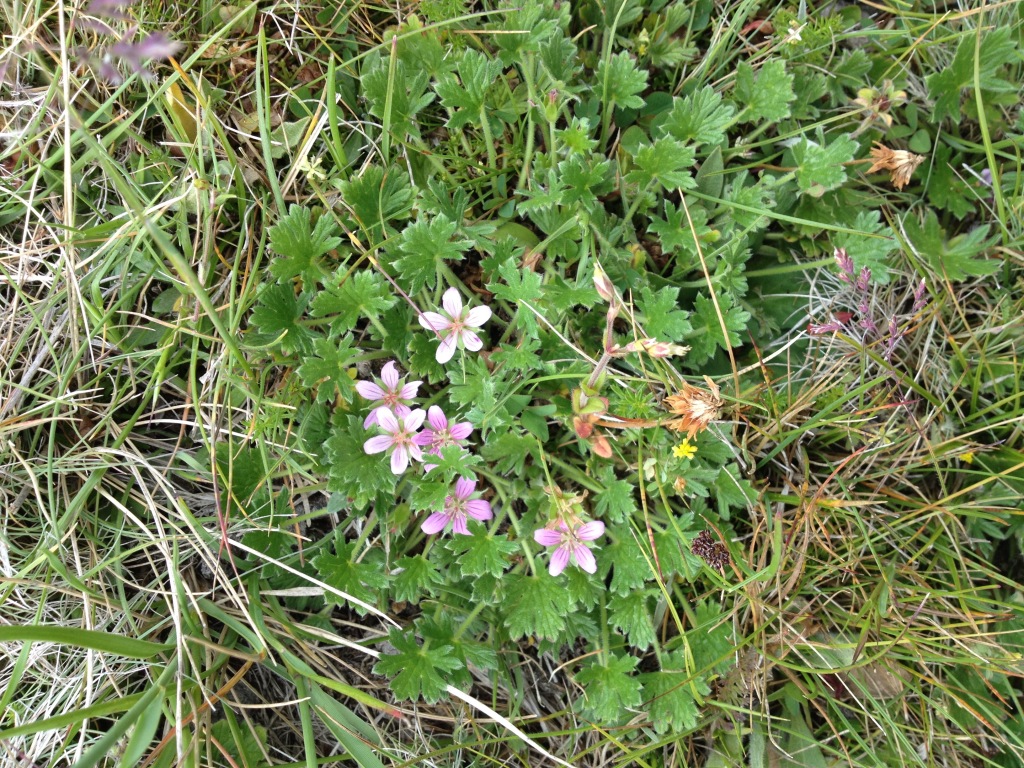Geranium antrorsum
Carolin Rosetted Crane's-billRosetted perennial to 10(–15) cm high; stems absent or short, not exceeding leaves, hirsute with antrorse to almost patent hairs; taproot fleshy or woody. Leaves c. orbicular, 1–4 cm long, palmatifid to palmatisect with 5–7 broad, trifid, often toothed, primary lobes; ultimate lobes obtuse; upper surface somewhat hirsute with inclined hairs, particularly along veins and near margin; stipules broad elliptic to ovate, long-acuminate, reddish. Flowers solitary; peduncles 0.2–2.1 cm long; pedicels 0.7–3.6 cm long; sepals narrow-ovate to elliptic, 4–6 mm long, hirsute, acute, mucro to 2 mm long; petals c. elliptic, 5–9 mm long, obtuse to emarginate, bright pink to magenta; anthers yellow with pink to purple dehiscence lines. Fruits 10–14 mm long; mericarps sparsely pubescent to hirsute, suture margins not ciliate; seed dark brown to red-brown, smooth with minute obscure alveolae. Flowers Dec.–Apr.
GleP, EGU, HSF, HNF, MonT, VAlp. Also NSW, ACT. Widespread and locally common in subalpine grasslands, woodlands and montane forests (e.g Mt Baw Baw, Snowy Range, Mt Buffalo, Bogong High Plains etc.).
The characteristic features of the species are the rosetted habit, the bright pink to magenta petals which usually exceed sepals, and the indumentum of long antrorse hairs on the pedicel and peduncle.
Smith, L.P. (1999). Geranium. In: Walsh, N.G.; Entwisle, T.J., Flora of Victoria Vol. 4, Cornaceae to Asteraceae, pp. 219–233. Inkata Press, Melbourne.
 Spinning
Spinning
